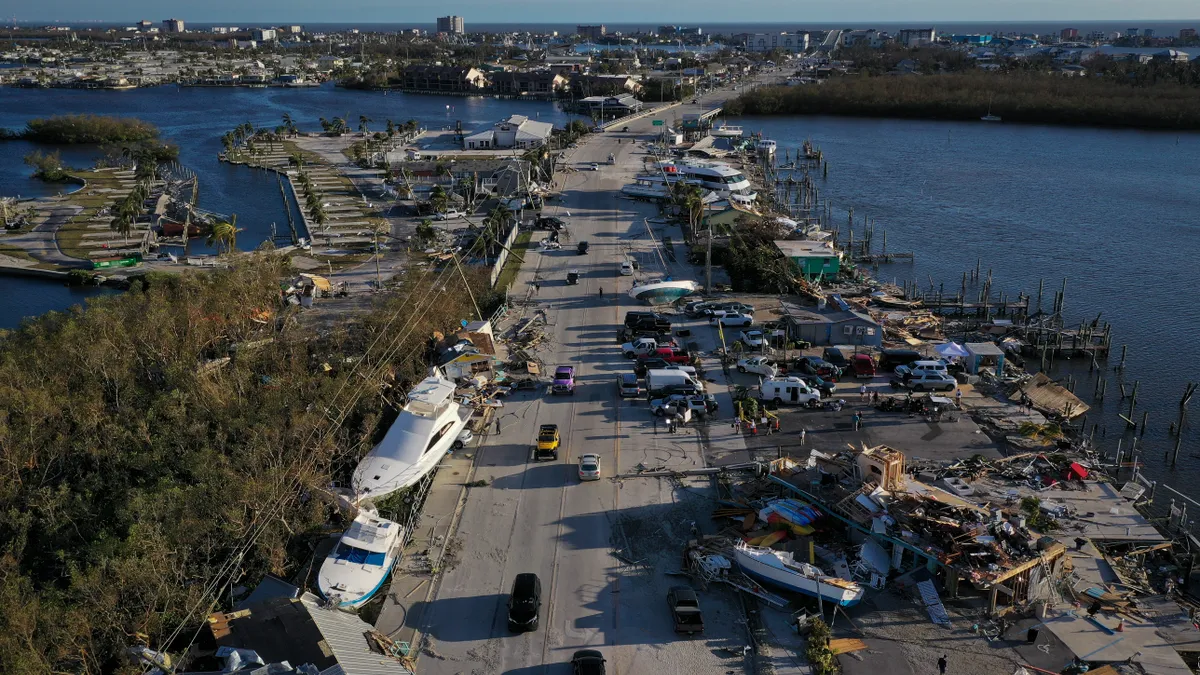When the COVID-19 pandemic caught school systems nationwide off guard, educators and students alike were forced to pivot to a new remote learning reality as mass shutdowns and social distancing measures kept schools closed for in-person learning.
“Most people didn’t have a plan for COVID, so they developed one on the fly,” said Amy McLaughlin, program director for cybersecurity for the Consortium for School Networking. “In a disaster, you have to focus on the top priorities, because you can’t do all the things you normally do.”
Now that schools have been there, however, what lessons can they adapt for future disasters such as wildfires, hurricanes, water crises and blizzards? Experts recommend these seven best practices.
Create a district response team
School systems should create a district-level team in charge of devising emergency plans, McLaughlin said.
This team should include individuals representing administration, instruction, technology, communications, food services, human resources and finance. The team should have at least two people for each role, so if one is sick or out of state, another can step in, she added.
Ensure continuity of learning
School districts should make sure they can quickly switch to remote learning during an emergency if needed, McLaughlin said.
To do so, technology must become an integral component of everyday learning, so it’s not something foreign that gets pulled out only during emergencies, said Joseph South, chief learning officer for the International Society for Technology in Education. The percentage of school districts issuing digital learning devices to all middle and high school students increased from about 66% in 2019 to 90% in 2022. And for elementary school kids, the figure went from 42% in 2019 to 84% in 2022, according to data from EdWeek Research Center.
It’s important to acknowledge that despite the increase of 1:1 learning device programs, “equity as access to technology is still a big issue,” South said.
Additionally, support for English language learners is lagging, though multilingual learning management systems and educational resources are becoming increasingly available, he said.
If students don’t have access to remote learning due to issues like a lack of devices or online connectivity, districts can identify alternative locations for schooling, perhaps setting up morning and evening class rotations if space is an issue, McLaughlin said.
Most school districts probably wouldn’t be able to adapt teaching to include students in emergency shelters, South said. “But for disruptions that only require the students to be at home, that’s the kind of disruption that schools can plan well for and resource for, and should be able to handle.”
Safeguard the basics — from child nutrition to payroll
Ensuring students continue to have access to free and reduced-price lunches during an emergency is very important, “because kids who are hungry can’t learn,” McLaughin said.
Emergency plans could identify staff members who can help bag lunches for families to pick up at a predetermined location, or that school buses can drop off to families, she said.
Another important component is payroll, because staff members must be able to take care of their own needs during emergencies, McLaughlin said.
For example, if the payroll system is knocked offline, districts can prearrange ways to have the previous month’s paychecks automatically repeat, McLaughlin said. Once the emergency is over, districts can clean up any mistakes, such as overpayment of people no longer on payroll, she said. “That’s a fairly practical system, even if it’s not 100% accurate.”
Reexamine IT failsafes
Solid infrastructure is critical for operational continuity, and IT servers inside buildings are at greater risk of getting damaged or losing power during emergencies like flooding, South said.
“Many schools are migrating to cloud-based services, and those are much more resilient during times of disruption,” South said. The conversion can be costly and the transition lengthy, but typically operational costs are equal or lower, he said.
It's also essential to have a plan to ramp up IT support for teachers during emergencies, South said. “During COVID, some districts did that and some did not, and the ones that didn’t absolutely were frustrated in their ability to teach.”
If hiring additional staff is not an option, districts can plan to rely on emergency IT teams by pooling resources with neighboring districts, or even tapping into coaches, volunteers and others willing to help.
Run through practice scenarios
It’s important for emergency plans to clearly state which staff members have the authority to set the plan in motion, and under what circumstances, McLaughlin said. And the emergency planning team should regularly practice different tabletop scenarios “to create flexibility” in those plans.
The key is to schedule the necessary time for practice, even if it’s only done once a year. “Keep those skills fresh, just like you do a fire drill,” McLaughlin said. “Because thinking through these things in advance gives you a sense of a path forward.”
Communicate the plan
It’s imperative that only one person is in charge of communications during emergencies, McLaughlin said.
“The worst thing is to have conflicting communications come out of a district,” she said. “Well, the worst thing is having no communications at all.”
School districts should already have a relationship with parents and caregivers, along with robust electronic systems for communication with them, South said. “You can’t be establishing electronic communication with parents during an emergency. You need to have that in place,” he said. “And ideally, the teacher should already be in electronic communication with the parent or caregiver, and then you can leverage those relationships.”
It’s also good for school districts to publicly inform their school boards about their emergency planning efforts, McLaughlin said. “I think making it visible helps people understand that there is a plan.”
Build relationships with government and community agencies
McLaughlin recommends districts connect with local government agencies in charge of emergency planning, such as a local National Guard office, or cohorts of first responders or volunteers.
“Most communities have a local emergency response team of some kind that does this kind of planning for the rest of the community,” she said. “Connecting with them is highly recommended.”
The bottom line is that resilient learning systems are based on relationships, not geography or the type of facility, South said. “If you believe that a classroom makes learning happen, then you’re not thinking about learning the right way,” he said. “Relationships make learning happen.”





 Dive Awards
Dive Awards












